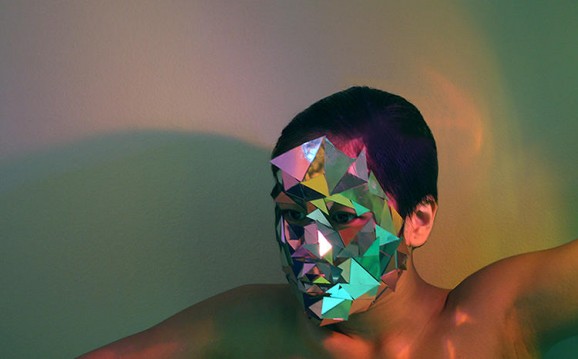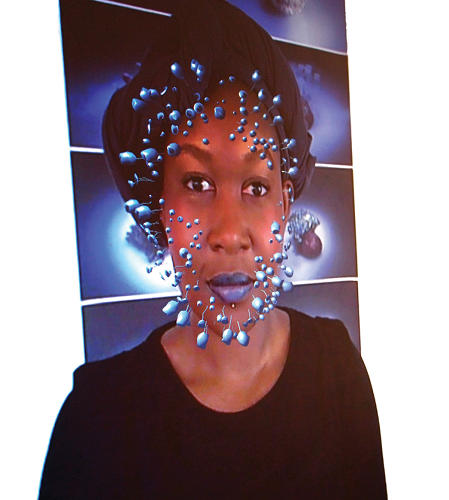Designer Gives Us A Glimpse At The Future Of Our Faces
This article is more than 2 years old
 Wearable technology is all the rage. We’re not just talking Google Glass, either, that’s downright primitive at this point. We’re talking everything from high-tech spacesuits to implants to contact lenses. Continuum’s Kiera Cameron wears a CMR that superimposes all kinds of data over a crime scene, like whose fingerprints are on the wall, the blood pressure of the potential suspect in the hallway, the origin of the mud on the floor. She looks at objects and sees something different than what we see. Neil Harbisson, the first person to take a passport photo without removing his cyborg attachments, hears colors—he definitely experiences the world differently than the rest of us. Designer Jenny Lee imagined the possibilities of how wearable technology could affect the way we see faces. Her augmented reality project, called “Immateriality: The Future Human,” offers a look at how our faces might appear in the year 2060.
Wearable technology is all the rage. We’re not just talking Google Glass, either, that’s downright primitive at this point. We’re talking everything from high-tech spacesuits to implants to contact lenses. Continuum’s Kiera Cameron wears a CMR that superimposes all kinds of data over a crime scene, like whose fingerprints are on the wall, the blood pressure of the potential suspect in the hallway, the origin of the mud on the floor. She looks at objects and sees something different than what we see. Neil Harbisson, the first person to take a passport photo without removing his cyborg attachments, hears colors—he definitely experiences the world differently than the rest of us. Designer Jenny Lee imagined the possibilities of how wearable technology could affect the way we see faces. Her augmented reality project, called “Immateriality: The Future Human,” offers a look at how our faces might appear in the year 2060.
 Lee, who got the idea from a Google contact lens designer, uses something she calls “digital skins,” which are like geometric, virtual masks. She made physical shapes that resemble small sculptures via a “mineral crystallisation process” and used those as the basis for the digital skin. She set up interactive mirrors and participants in her project chose a shape they would see tessellated across their faces. As you watch the video, you notice that the faces are quite literally enhanced, with geometrical mountains of color up the ridge of someone’s nose, peaking at the forehead and again at the chin. Some faces look like a human mated with a Rubik’s Cube, or with a rose.
Lee, who got the idea from a Google contact lens designer, uses something she calls “digital skins,” which are like geometric, virtual masks. She made physical shapes that resemble small sculptures via a “mineral crystallisation process” and used those as the basis for the digital skin. She set up interactive mirrors and participants in her project chose a shape they would see tessellated across their faces. As you watch the video, you notice that the faces are quite literally enhanced, with geometrical mountains of color up the ridge of someone’s nose, peaking at the forehead and again at the chin. Some faces look like a human mated with a Rubik’s Cube, or with a rose.
The text along with the images continually references the “new future human.” What Lee envisions isn’t necessarily the most practical type of wearable technology, like a device that monitors glucose levels or lets us breathe in places where there’s no oxygen, but she’s on to something with the idea that augmentations don’t have to do a job. Providing a different, stunning, and interesting visual lens does serve a practical purpose, however, in that it contributes to the wonder, beauty, and depth of life.
 Audiences haven’t been so sure, and overall reactions have been negative. “I think they found it quite a terrifying experience,” says Lee. Well, I can see that, given that you see shapes grow out of your own face. That only underscores what we all know about superficiality in our culture. Lee says that ultimately, she’s asking about the benefits of wearable technology—who are they really for, and why?
Audiences haven’t been so sure, and overall reactions have been negative. “I think they found it quite a terrifying experience,” says Lee. Well, I can see that, given that you see shapes grow out of your own face. That only underscores what we all know about superficiality in our culture. Lee says that ultimately, she’s asking about the benefits of wearable technology—who are they really for, and why?












